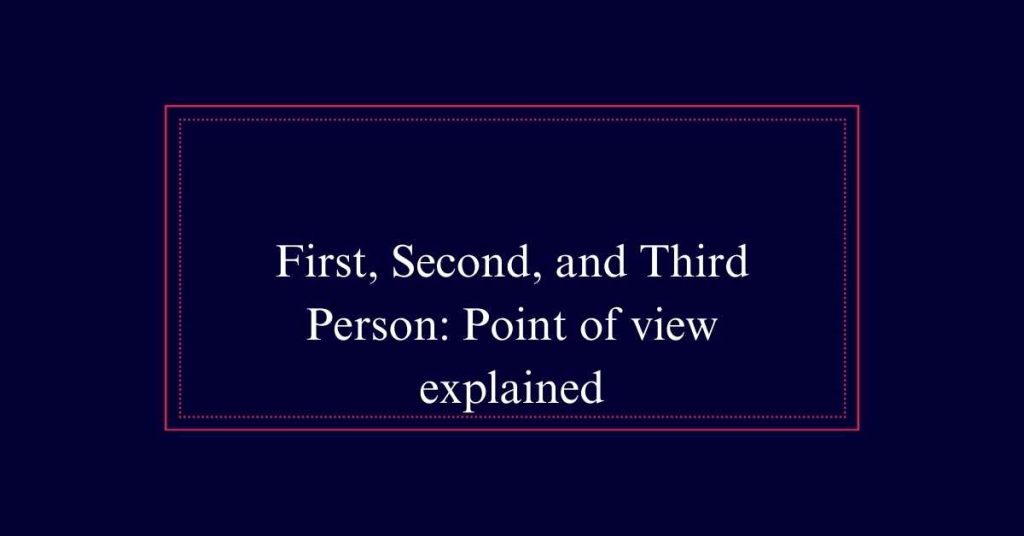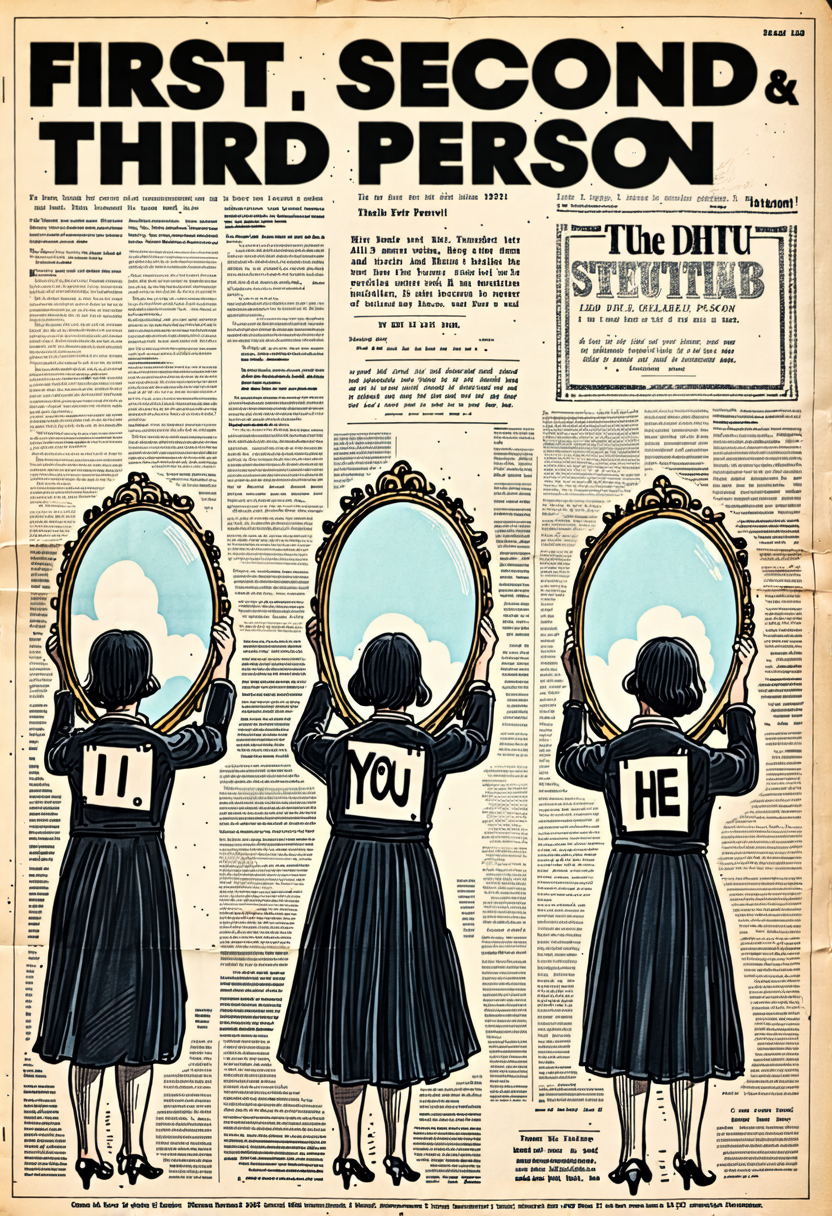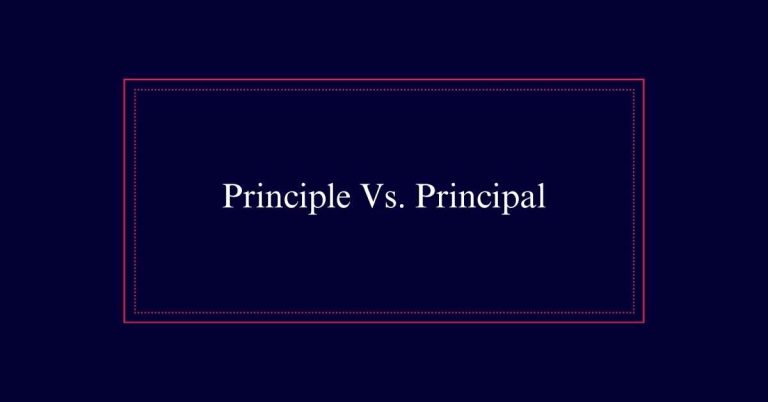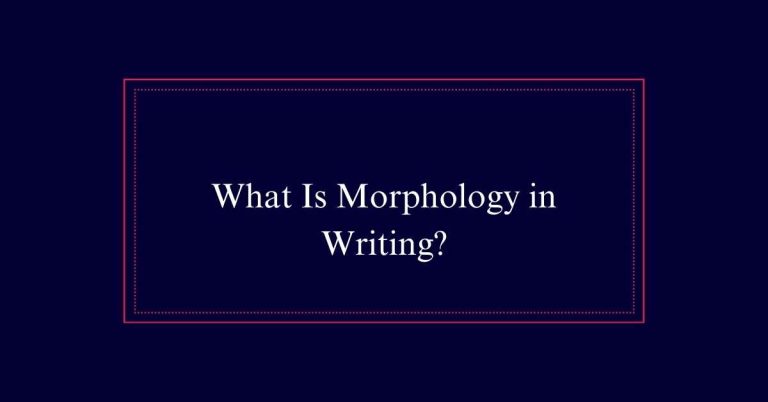First, Second, and Third Person: Point of view explained
Understanding point of view in writing is essential. First-person uses pronouns like ‘I’ and ‘we,’ offering an intimate look into the narrator’s mind. Second-person addresses the reader directly with pronouns like ‘you,’ creating an engaging and participatory experience. Third-person employs pronouns like ‘he,’ ‘she,’ and ‘they,’ providing a thorough view of multiple characters and events.
Understanding First Person
In first-person point of view, the narrator recounts events from their own perspective using pronouns like ‘I’ and ‘we.’ This narrative style is often used to share opinions and personal experiences. It can be either singular or plural.
First-person point of view is common in stories and novels, allowing readers to see events through the character’s eyes. By providing an intimate look into the narrator’s thoughts and feelings, this perspective helps create a deep connection with the reader.
For example, sentences like ‘I think I lost my wallet!’ or ‘We could do ourselves a favor and make a reservation,’ illustrate the immediacy and directness of first-person narration. This approach makes the narrative personal and engaging.
First Person Pronouns
First-person pronouns, such as ‘I’, ‘we’, ‘me’, and ‘us’, are essential for conveying personal experiences and thoughts in writing. These pronouns allow writers to present their inner feelings and perspectives directly to the reader.
Singular pronouns like ‘I’ and ‘me’ are used when referring to oneself, creating an intimate and personal narrative. Plural pronouns like ‘we’ and ‘us’ include the speaker and others, fostering a sense of community or shared experience.
First-person pronouns are effective in making the narrative relatable and engaging. They provide readers with direct access to the narrator’s thoughts and emotions, enhancing the depth and authenticity of the story.
This point of view is prevalent in autobiographies, memoirs, and personal essays.
First Person Examples
Why are examples of first-person point of view effective in drawing readers into a narrative?
First-person examples engage readers by providing a direct insight into the narrator’s thoughts and experiences. For instance, ‘I think I lost my wallet!’ immediately conveys personal concern and urgency.

Another example, ‘We could do ourselves a favor and make a reservation,’ illustrates a shared experience, fostering a sense of inclusion.
Many stories use this point of view to offer an intimate look into a character’s mind. This perspective allows readers to experience events as the character does, creating a deep connection.
Effective first-person writing, as seen in these examples, immerses readers in the narrative, making them feel part of the story.
What Is Second Person?
Second-person point of view directly addresses the reader using pronouns like you, your, and yourself. This perspective engages the reader by making them an active participant in the narrative. Unlike the more common first-person and third-person points of view, second-person point of view is less frequently used in fiction.
It is often found in instructional writing, self-help books, and interactive forms of storytelling such as choose-your-own-adventure books. This style creates a unique relationship between the writer and the reader, fostering a sense of immediacy and involvement.
Second Person Pronouns
In second-person writing, the use of pronouns like you, your, and yourself directly involves the reader in the narrative. This approach creates a unique, immersive experience, making the reader feel directly addressed and engaged. It is often used in instructional writing, advertisements, and interactive fiction. The table below illustrates the emotional impact of second-person pronouns:
| Pronoun | Emotional Impact |
|---|---|
| You | Creates a personal connection |
| Your | Makes content feel relevant |
| Yourself | Promotes self-reflection |
| You are | Empowers and engages |
| You should | Provides direct guidance |
Second Person Examples
One effective way to understand second-person point of view is by examining specific examples. This perspective uses the pronoun ‘you’ to address the reader directly, creating a unique and engaging narrative style. Here are three examples to illustrate second-person point of view:
- Instructional Writing:
‘You should preheat the oven to 350 degrees before mixing the ingredients.’
- Interactive Fiction:
‘As you enter the dark cave, you hear a faint whisper. Do you proceed or turn back?’
- Self-Help Books:
‘To improve your productivity, you need to set clear goals and prioritize your tasks.’
These examples demonstrate how second-person point of view can make the reader feel directly involved in the narrative or instructions.
Exploring Third Person
Third-person point of view offers writers the flexibility to describe events from an external perspective. This narrative style uses pronouns like he, she, it, and they. It enables the narrator to present a comprehensive view of characters and their actions. This vantage point can be limited, focusing on one character’s thoughts, or omniscient, offering insights into multiple characters and events. Third-person narration provides a balanced and objective view, often used in novels and stories to give a broader understanding of the plot.
| Perspective Type | Description |
|---|---|
| Third Person Limited | Focuses on one character’s thoughts and feelings. |
| Third Person Omniscient | Offers insights into multiple characters and events. |
| Objective | Narrator presents only observable actions. |
| Subjective | Narrator includes personal thoughts and feelings. |
Third Person Pronouns
To effectively employ the third-person point of view, it is important to understand the specific pronouns used in this narrative style. Third-person pronouns help narrators describe characters and actions from an external perspective. This point of view uses pronouns such as ‘he,’ ‘she,’ ‘it,’ ‘they,’ and ‘them.’
Here are the key third-person pronouns:
- Singular Pronouns:
- He
- She
- It
- Plural Pronouns:
- They
- Them
- Possessive Pronouns:
- His
- Her
- Their
These pronouns allow writers to provide a broader view of the story, encompassing multiple characters and events. Understanding their use is essential for clear and consistent third-person narration.
Third Person Examples
Examples of third-person point of view illustrate how narrators describe characters and their actions from an external perspective. This point of view uses pronouns like he, she, it, they, and them.
For instance, in the sentence, ‘Tiffany used her prize money to buy herself a new microscope,’ the narrator describes Tiffany’s actions and decisions.
Another example is, ‘The concertgoers roared their approval,’ which shows a collective reaction from an outside perspective.
Third-person narratives provide insights into characters’ emotions and experiences while maintaining a broader view of events. This approach allows the narrator to offer a balanced perspective on multiple characters, enhancing the depth and richness of the story.
Frequently Asked Questions
How Does Point of View Affect Reader Engagement?
Point of view shapes reader engagement by influencing how readers connect with characters. First-person offers intimacy, second-person involves the reader directly, and third-person provides a thorough view. Each perspective creates a unique reader experience.
Can Point of View Change Within a Story?
Yes, point of view can change within a story. Authors may shift perspectives to provide different viewpoints, enhance narrative depth, and offer various character insights. This technique can enrich the reader’s understanding and engagement with the plot.
How Does Point of View Impact Character Development?
Point of view shapes character development by revealing internal thoughts, emotions, and motivations. First-person offers intimate insight, second-person engages the reader directly, and third-person provides a broader perspective on multiple characters and their interactions.







